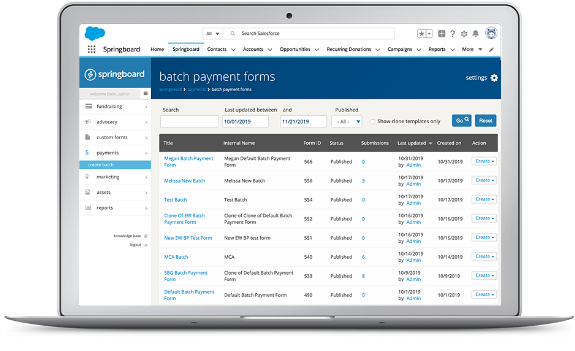Team Perspective: 5 Factors in the Success of NRDC’s Website Launch
Jackson River is thrilled to announce that earlier this month, the Natural Resources Defense Council launched their new website. Depending on how you define the “beginning” of this capstone endeavor to align decades of research and policy work with an updated communications strategy, the new site is somewhere between 1 and 5 years in the making, so it is with great pleasure that we celebrate and reflect upon what was a fun, challenging, highly complex project. With input from the development team, here are five of the key factors that I think made it both successful and rewarding for all involved.
NRDC is an awesome organization.
Some of the first things you’ll probably notice about the new site are the stunning imagery, engaging content, and clarity of purpose, all of which are the direct result of strategic and operational efforts within NRDC. With over 18,000 pieces of content including photos, videos, data visualizations, and policy reports, this was a major undertaking by dozens of writers, editors and communications experts. Good thing they had the right people in the right places after restructuring their digital team!
This was all coordinated under a core web team that included key points of contact for various facets of the site (e.g. SEO and analytics, social strategy, editorial workflow, etc.), which meant that as their development team, we had access to subject matter experts who could collaborate effectively on technical and process decisions. And best of all, our primary point of contact had the knowledge and authority necessary to make critical decisions in the face of evolving priorities.
We had a solid plan...
[[{"attributes":{},"fields":{}}]]
The site is built on Drupal 7, and extensive requirements analysis and build planning was conducted before development got under way. Every content type, every view, every panel, every imagecache setting (you get the idea…) was detailed in a shared document that served as our blueprint for the build. Each line on the build plan was managed in our ticketing system with assignments, dependencies and task sequencing noted throughout. Combined with data from our time tracking system, I was able to use Earned Value Analysis to keep everyone aware of our progress in terms of budget, schedule, and build status at every turn.
… to which we did not stick.
[[{"attributes":{},"fields":{}}]]
Did I mention that this was a big project? One of the risks of large, long-term development projects is that market conditions or strategy may change before the finished system ever sees the light of day. In this case, mid-project, it was decided that a longer-term communications goal of addressing NRDC’s fragmented digital presence and content strategy would be done in tandem with the main site rebuild. That meant, among other things, absorbing the contents and branding of their digital magazine, OnEarth, and Earthwire newsfeed into the half-built site. Time to re-think the plan! Having the build fully detailed in a living document made it possible to radically change the scope and trajectory of the project mid-stream without breaking stride on portions that were unaffected by the change.
We were transparent about processes and challenges.
“What's missing?” “What scares you about this plan?” “Where can we be more flexible?” These were common discussion points in our status meetings, both internally at Jackson River and with the client. Expectations were always clear, and there were very few surprises. The client told us whenever they thought a change might be in the air (better enabling us to be prepared to react) and we told them whenever we thought we might hit a rough spot (like wrangling a particularly tricky content migration). By not only meeting potential roadblocks head on, but inviting and encouraging them to be raised and discussed, we created an environment of trust and cooperation that made victories a bit sweeter and challenges a bit easier to overcome.
We had a dedicated and enthusiastic team.
It’s not difficult to get excited about a client like NRDC, not least of all because they're a worthy organization that does trailblazing work in environmental policy and advocacy. From a technical/requirements standpoint, Threespot’s designs called for visually stunning, mobile-friendly/responsive design with broad device support, which gave Danny and Meli room to stretch and really exercise their front-end skills. David utilized his technical leadership skills to the fullest in managing and extending Sheena’s brilliant initial architecture. Laura rolled seamlessly onto the project as it was hurtling toward launch, and quickly became an invaluable member of the team (a testament to both her skill and flexibility as a developer, and the aforementioned planning & documentation). We heard frequent feedback from the client about how the features we were building would directly contribute to improved communications and workflow at NRDC, which fueled a positive feedback loop of business awareness and creative solution design between the development team and the client.
All of the above ultimately brought me to what I’ll probably remember as one of my favorite Jackson River moments for a long time: working from NRDC’s office in midtown Manhattan on the morning the site launched, and reporting via video conference to the development team that staff members were arriving to work, seeing the new site, and high-fiving each other in the hallway.
Of course, it is a website, which means that there’s always more to be done and we can’t rest on our laurels celebrating for too long. As we monitor usage and trends on the new site, revised goals and requirements are already being set. I trust that this foundation of sound strategy, planning, communication and camaraderie will go a long way in helping us meet them.

